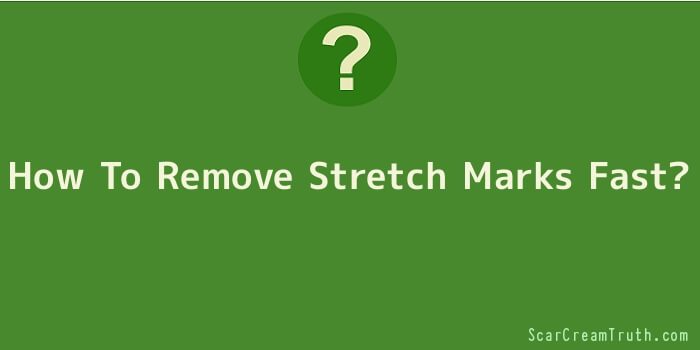
In the United States alone, statistics show that 70% adult females, 90% of pregnant women, and around 40% of adult males have stretch marks, so it is no wonder that there is a barrage of stretch mark products and services all claiming to remove stretch marks.
However, it is vital to note that there is no therapy to get rid of stretch marks. So, it is important to remember that when certain remedies claim to ‘remove stretch marks’, they can only reduce stretch marks, or significantly, improve the appearance.
Understanding the Formation of Stretch Marks
In general, stretch marks are formed during pregnancy, yo-yo weight loss and weight gain, surgery, when bodybuilding on steroids, and when hormones are imbalanced. Because skin is stretched during the above mentioned occurrences, the skin’s dermal layer is torn.
Typically, stretch marks are coloured purple, reddish, or brownish in their early stages. They begin to become silvery and glossy, and appear to be striped in white and silver colours as they become older.
Stretch marks are formed in the skin’s dermis, which is the skin’s middle layer responsible for retaining its shape. On the other hand, your skin can only take so much tearing and stretching, that it will inevitably lose its ability to repair itself properly, which causes stretch marks and other skin problems.
Women and men usually have stretch marks on certain areas of their bodies or several regions of their bodies. These scars are normally found on the abdominal area, especially for women who just gave birth, breasts, thighs, butt, lower back, upper arms, and hips.
The good news is that the pigmentation can lighten over time. The bad news though is that the texture of the skin affected with stretch marks become flabby and takes on the striped appearance. This striated appearance will stay the same, but can be reduced or diminished with the right remedies to remove stretch marks.
Methods that can be used to remove stretch marks will be highly dependent on their location and the severity of the scar tissue. For newly formed stretch marks, removal of the damaged, outer layers of the skin to unveil new and soft skin can aid in reducing the appearance of stretch marks, but not the texture.
Common natural preparations used for exfoliating the damaged skin cells include baking soda and oatmeal. The exfoliation process is followed by slathering on heavy duty moisturizers and oils that are believed to hydrate the skin and consequently remove stretch marks. However, these are not really effective since they don’t treat the dermis of the skin where these scars are formed.
For more severe stretch marks, most people turn to cosmetic procedures to remove them, which include skin peels, microdermabrasion for stretch marks, and laser treatments. These cosmetic procedures are effective in improving the appearance of scars, but not in repairing the skin’s torn fibres which caused the stretch marks in the first place.
Likewise, they come with increased chances of scarring, hyper pigmentation, and burning, and may be too painful for people with low pain thresholds.
These methods to remove stretch marks also require a number of sessions, and these procedures come with a hefty price tag of around $200 to $1000 per session depending on where you live and the credentials of the doctor or establishment.
Stretch mark removal creams and lotions are also gaining popularity because they require no downtime and are very affordable, as opposed to cosmetic procedures used to remove stretch marks. However, not all creams are made equal, and some deliver better results than others.
Why some Products Don’t Work
Most products claiming to remove stretch marks simply don’t work because they only target the symptoms and not the cause.
Dry skin – Skin dryness is a mere symptom of stretch marks but is not really the cause. As stated above, stretch marks are formed deep below the skin’s surface, in the dermal layer, brought about by extreme stretching, trauma, strain, and stress leading to the breakdown of the skin’s structure.
There is no cream, lotion, or moisturizer available that can prevent this kind of skin damage since it is in the dermal layer, and therefore, stretch marks cannot be treated just by slathering on tons of moisturizing products.
Treating the skin’s superficial layers – harsh cosmetic procedures to remove stretch marks including peels, microdermbrasion, and laser are only able to treat the skin’s superficial layers and not the dermal layer where stretch marks occur. They are, however, capable of reducing the appearance of stretch marks, but not healing the skin’s dermal layer required in preventing scars from occurring again.
Products with collagen and elastin as their active ingredients – These types of stretch mark removal creams advertise that they can eliminate them all together because of their main ingredients.
However, more effective stretch mark removal creams not only contain these ingredients, but contain several ingredients capable of boosting collagen and elastin production, required to heal the skin’s both dermal and superficial layers, which effectively leads to the diminished appearance.
